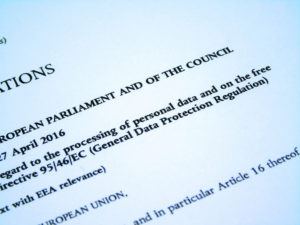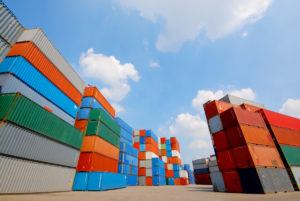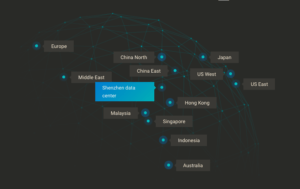John Engates' Cloud Predictions for 2018
jengates

I’m lucky enough to spend a good portion of each working year with customers and speaking at conferences, where I get to hear from the best and brightest on virtually every subject related to cloud computing — which at this point is basically everything, from smart home devices to following a tuna from catch to can (more about that later).
Then each year around this time, I sit down to think about the upcoming year: what trends am I seeing? What dots can I connect?
I also look back to my previous year’s predictions, to see how well they withstood the previous 12 months. Last year, I wrote about the reality of today’s multi-cloud world — check!, that security would get worse before it gets better — check!, and the continued march of the Internet of Things into your home (and cars) — check!
I also predicted the end of Moore’s Law, with competition in alternative silicon beginning to, “kill off some players,” which hasn’t quite happened, and rise of serverless architecture, which definitely is happening, but perhaps not at the velocity I predicted. More on this one later, too.
I give myself an B+ for last year’s predictions.
Security, compliance and the rise of managed security service providers

With data breaches taking on even more breathtaking dimensions in 2017 — looking at you, Equifax — security and data privacy issues remain on the front burner, and I see a couple trends dovetailing next year: implementation of the European Union’s General Data and Protection Regulation and an increased reliance on managed security service providers.
The GDPR, set to take effect in May 2018, updates two-decade-old data protection policies in Europe, offering new rights for people to access information companies hold about them, setting higher standards for data management and including harsh penalties for those that don’t comply.
As global companies work toward compliance, they need sophisticated subject matter expertise, backed up with technical controls to show they are doing what the law obligates them to do. Cost and lack of expertise are driving organizations that might have once felt they could do it themselves into the cloud — and into the arms of managed security service providers, which have already built operations and have the ability to help customers comply with GDPR. It’s no longer a question of being less secure ‘in the cloud’; now it’s about whether customers have the time, energy and resources to do it themselves.
In 2018, I predict many more will turn to managed security service providers for multi-cloud security and compliance.
Industry-specific clouds will become the norm for many industries

While 2017 solidified the reality of a multi-cloud world, where companies match each workload to the cloud platform where it will achieve the best performance and cost-efficiency, I predict 2018 will see industry-specific clouds become mainstream.
So many industry sectors have unique needs, demand certain capabilities and must comply with various regulations that it was inevitable they would begin to seek not just multiple cloud platforms, but clouds tailored to their individual industry.
Healthcare, government and finance are obvious examples of verticals that would benefit from a higher level of industry specificity. Others include energy, biotech and even retail. In some cases, industry has taken the lead to create their own unique clouds, including GE and Hitachi in industrial IoT. I predict we’ll see additional demand driven by associations and industry groups that share information, like Sabre did for the airline industry years ago.
Outside industry, more cloud service providers — the smart ones, anyway — will create cloud offerings with industry-specific features, compliance requirements, and certification demands built in. IDC calls them “industry collaborative clouds,” and in its most recent ICT Market Update, suggested that within a decade, half of all enterprises will be connected to such clouds.
Blockchain moves beyond cryptocurrency
 If you say “blockchain” to most people, they immediately think Bitcoin — and still have no idea what it is. And while blockchain is the foundation for cryptocurrencies (digital assets that act as mediums of exchange using cryptography to secure transactions), it’s actually a much broader way to structure, store and secure data.
If you say “blockchain” to most people, they immediately think Bitcoin — and still have no idea what it is. And while blockchain is the foundation for cryptocurrencies (digital assets that act as mediums of exchange using cryptography to secure transactions), it’s actually a much broader way to structure, store and secure data.
When used as a “distributed ledger,” blockchain consists of concatenated blocks of data or transactions across a network of computers with no central authority. It allows the sharing of that distributed ledger across clouds and even across companies, without giving a single party the power to tamper with it — and that has powerful implications, if information about the provenance of goods, identity, credentials and digital rights can be securely stored and shared.
Remember at the top when I referenced tuna from catch to can? One of my favorite examples of a non-financial blockchain use comes from Provenance, a UK-based software company, which successfully piloted the use of blockchain and smart tagging to track tuna from catch to consumer, allowing for verifiable social sustainability claims, among other benefits.
So while cryptocurrency isn't necessarily the future, it looks as though blockchain may be.
Alibaba: Asian cloud sees global clout grow 
Alibaba Cloud is growing massively, in two ways: it’s the only cloud that gives global companies an entrée into China, and more recently, it has turned its attention to other markets, launching data centers in Europe, Australia, Japan and the Middle East.
Gartner reports that Alibaba cloud sales skyrocketed 127 percent to $675 million in 2016, pulling into third place behind top-ranked AWS and second place Microsoft (with Rackspace taking fifth, behind Google).
Alibaba’s growing dominance was a key reason Rackspace acquired Datapipe, our closest competitor, earlier this year. Datapipe was named an Alibaba Cloud global managed service provider partner last year, and now helps both Chinese companies expand globally and international organizations enter the Chinese market. The scale and experience that will come from the combination of Rackspace and Datapipe will undoubtedly accelerated the adoption of Alibaba Cloud as a strategic component of a company’s multi-cloud strategy.
I predict Alibaba Cloud will become a necessity for companies looking for a global reach, especially as they become comfortable with the realities of today’s multi-cloud world.
Changes to the way we consume cloud

Not only is what we do with cloud changing — think blockchain, machine learning, Internet of Things, etc. — but how and where we do cloud is changing as well.
For example, just last month Rackspace and Hewlett Packard Enterprise announced the first ever pay-as-you-go managed private cloud, a true game changer. This OpenStack private cloud offers customers the best of all worlds — the cost effectiveness of public cloud, the security and performance of a private cloud, managed by experts and consumed as a service. This has the potential to push cloud into even more enterprise environments where companies may have to date, been reluctant to move some workloads.
Containers are also changing the way we consume cloud and I predict 2018 will finally see a clear winner in the container space in the Kubernetes cloud orchestration platform. The popularity of Kubernetes is phenomenal and I see 2018 being the year enterprises start to seriously bet on the platform for real production applications.
In 2018 and beyond, I predict a shift in how developers utilize the cloud and even where they deploy their applications. Serverless computing, or functions-as-a-service, will radically simplify the use of cloud and lower the bar for software “builders” to take advantage of cloud computing.
I use the word builder because even the nature of who writes software will begin to change. Already we’re seeing low-code options that enable people to string together logical arguments to create an outcome, such as those offered by IFTTT, a company that connects common apps and devices, to allow for things like turning on your porch light when the pizza guy arrives.
In the near future, I think we’ll see some software written with automation or artificial intelligence, directed by non-traditional software developers; think business analyst or scientist. Where they deploy will also change, as centralized cloud datacenters are augmented with capacity on the edge — think embedded computing in vehicles, factories and devices. The serverless model of building software simplifies the creation, deployment and migration of applications and fundamentally will change who is considered a software developer.
I think a lot of these predictions are great reminders of the ever-changing nature of IT.
We’ve seen multi-cloud become the norm, IT transformation become even more critical to the success of business, and now we’re watching the way we consume cloud evolve. It’s a good reminder that the only constant is change, and it gives me the opportunity to drop in a shameless plug for Rackspace: no matter what your IT needs are or will be, consuming them as a service — which allows organizations to focus on their core business needs — really is the future.

Recent Posts
Die Zukunft innovativer Fertigung – Wie drei Unternehmen auf eine Next-Generation-Cloud umstellten
September 27th, 2023
Highlights der Google Cloud Next '23 – KI und darüber hinaus
September 14th, 2023
Was versteht man unter Workload-bewusster Modernisierung? Und warum ist sie entscheidend, damit Workloads auf der richtigen Infrastruktur ausgeführt werden?
September 6th, 2023
Multicloud meistern: Die Power der Cloud-neutralen Datenspeicherung
August 31st, 2023
